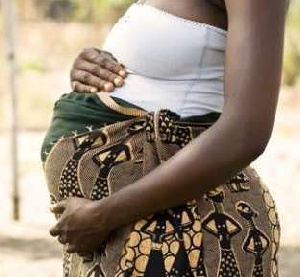The prevalence of HIV among pregnant women, attending antenatal clinic in the country is on a downward trend. A linear trend analysis has confirmed a declining epidemic since year 2000, placing the median prevalence for 2017 at 2.1 per cent.
The same cannot, however be said of the young population – those aged between 15 and 24. The prevalence among them - the proxy for new infections, rose to 1.5 per cent last year, from 1.1 per cent in 2016, something which calls for urgent action by all stakeholders to protect this productive group from getting the infection.
This was contained in the 2017 HIV Sentinel Survey (HSS) and Estimates Report, jointly released by the National AIDS and STI Control Programme (NACP). That was at the close of the week-long annual National HIV and AIDS research conference held in Accra.
Dr. Stephen Ayisi-Addo, the Programme Manager, NACP, said the report was a cross-sectional survey that targeted pregnant women attending antenatal clinic in selected sites across the nation. In the last 21 years, data from the report had been used as the primary source for national HIV and AIDS estimates for both planning and for policy interventions.
The regional prevalence rate ranged from 3.2 per cent in the Greater Accra and Ashanti Regions (the highest) to 0.6 per cent in the Northern Region (the lowest). Dr. Ayisi-Addo said site HIV prevalence also ranged from 0.2 per cent in the Afram Plains (representing the rural areas), to 5.2 per cent in Obuasi (urban areas), with the city median about 2.5 per cent higher, compared to the 1.0 per cent in rural locations.
The median prevalence was also as high as 2.5 per cent in urban locations compared to 1.6 per cent in the rural areas. The report showed that syphilis was on the rise with the median prevalence for 2017 coming to 0.3 per cent, an increase from 0.2 per cent in the previous year. Regional variations ranged from 0.1 per cent in the Brong-Ahafo, Upper East and Upper West Regions, to 2.1 per cent in the Central.
Dr. Mokowa Blay Adu-Gyamfi, the Director-General of the Ghana AIDS Commission, said the increase in new infections among the younger population gave cause for concern. There was laxity in preventive education and that needed to radically change.
She underlined the need to strengthen stakeholder collaboration, saying “we should not rest on our oars”. She urged the redoubling of the effort to cut down new infections and said HIV remained a threat to the nation’s socio-economic aspirations.
“We must halt mother-to-child transmission of HIV in the shortest possible time through the delivery of sustained anti-retroviral therapy, whilst minimising sexually transmitted infections among young people.” There should be availability of funding through domestic mobilization, to support all relevant HIV programmes, she added.
Health News of Sunday, 13 May 2018
Source: ghananewsagency.org

















